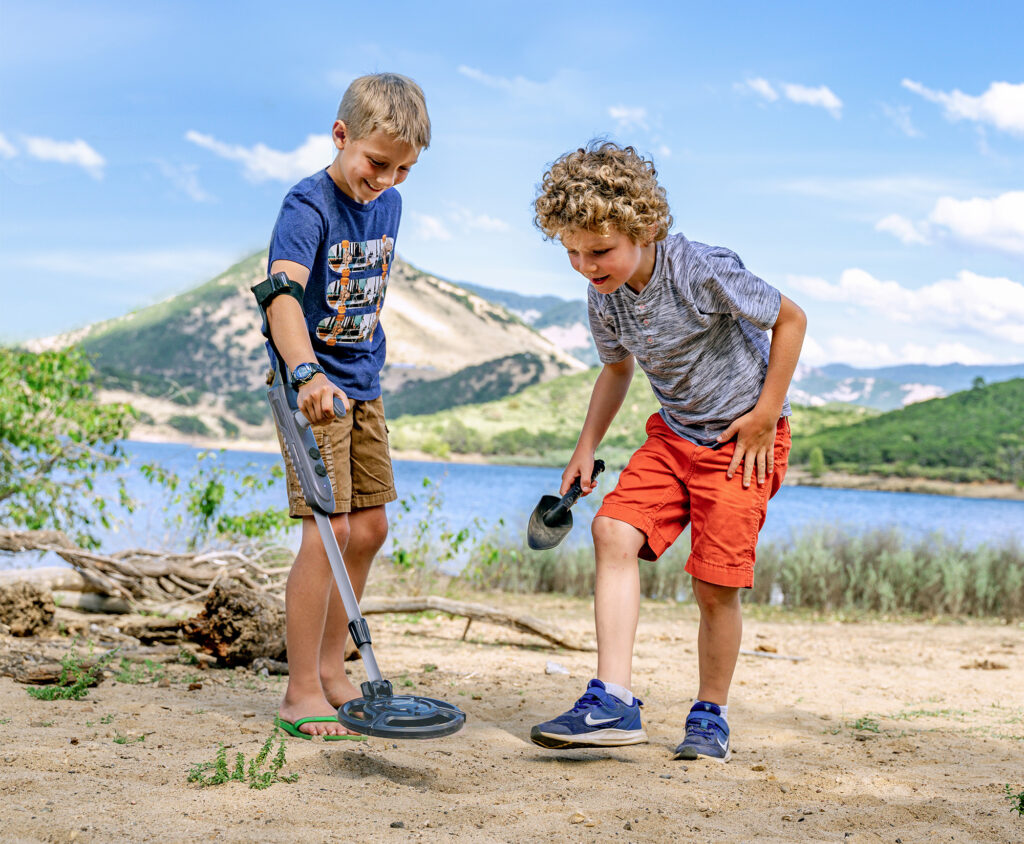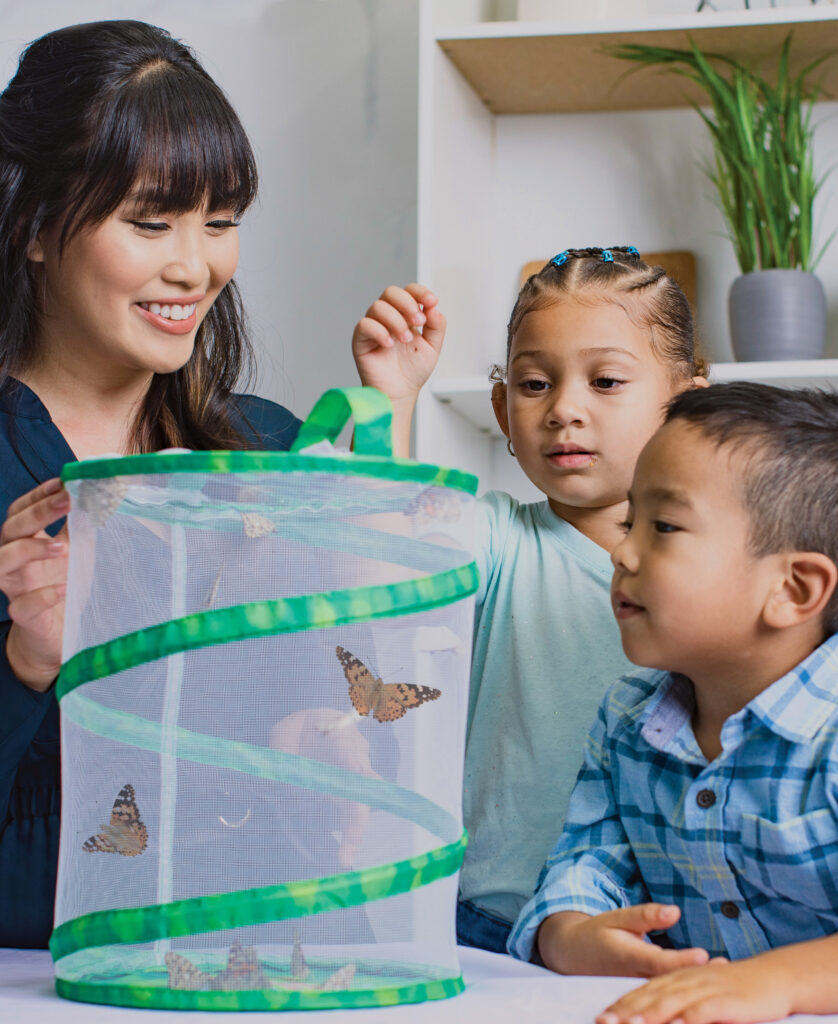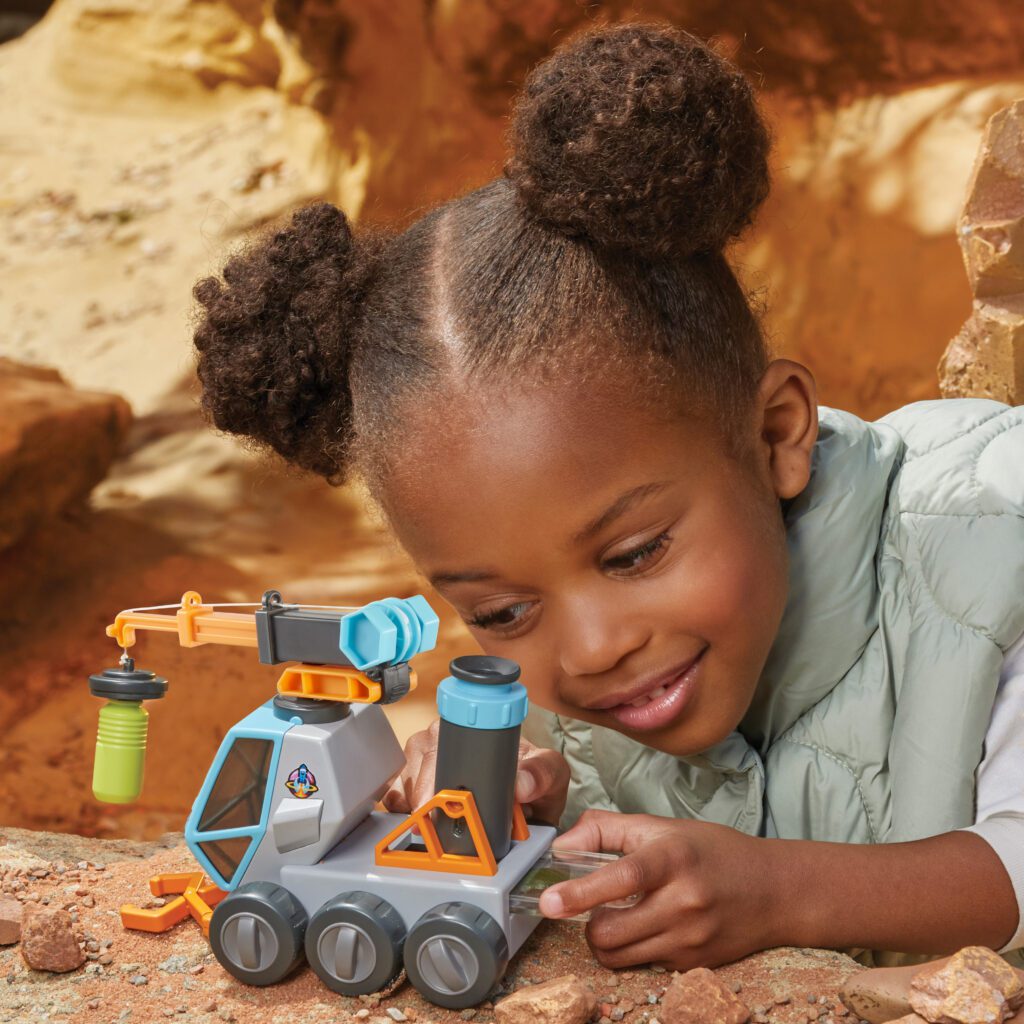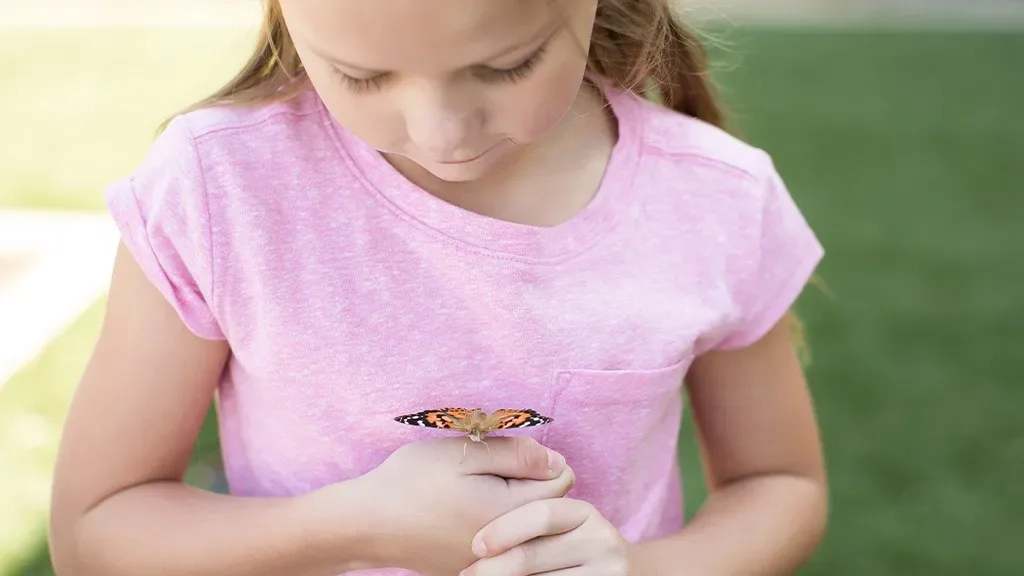The great outdoors remains the oldest playground and most traditional educational tool for parents everywhere. In recent years, some parents have felt that their kids are interacting less with nature and more with screens, prompting them to seek toys that cater to their kids’ instinctual need to get outside and explore. A study by JAMA Pediatrics revealed that kids’ average screen time rose 52% following the COVID-19 lockdown. Additional data showed that kids developed an aversion to physical activity after the lockdown.
“We can’t forget that many of our current cohort of kids went through an extreme period of isolation and disconnection these last couple of years … their imagination is bigger than the biggest room in the world can support,” explains Jordan Willing CEO of Blue Marble, maker of National Geographic STEM and activity kits. “Nature offers surprises under every rock as well as the chance to experience the greater connection we have with our planet. When you look at most kids’ secret stash of favorite treasures, you’re much more likely to find rocks, shells, and feathers than you are to find manufactured toys.”
Toys that center on nature and outdoor exploration have been a long-standing staple in many homes and classrooms. “Screens are an undeniable part of our education and workplace, but there are so many formative experiences that can only be found outdoors,” Willing explains. “Outdoor play provides opportunities to develop social and emotional skills with other children, such as problem-solving, turn-taking, safe risk-taking, and mindfulness.”
Creating science kits involves focusing on the play pattern, finding topics and concepts that kids gravitate to naturally, and developing an organically educational experience. Nature-inspired kits can prompt kids to learn about experimentation, forming a hypothesis, and caring for another living creature.

CLASSIC PLAY & NEW IDEAS
MGA Entertainment’s Little Tikes has been bringing kid-friendly outdoor toys like the iconic Cozy Coupe to neighborhoods for decades. This year, the company is offering a new line of vehicles geared toward inquisitive kids and the parents desperate to get them outdoors. Each Little Tikes Big Adventures set includes a transforming vehicle that features working exploration tools, like binoculars or a compass. Little Tikes Vice President of Global Marketing Mark Morse says that the line was designed to support “a sense of wonder and exploration” as kids “find the incredible stuff in their own backyard.”
Kids that really want to get their hands dirty can find more realistic nature kits waiting for them. Companies like Froggy’s Lair, Thin Air Brands, and Insect Lore offer products that include real critters and teach scientific concepts that are best learned through hands-on experiments. But bringing nature into homes isn’t always easy as some parents are averse to the process of setting up a kit, or to the idea of their kid taking care of a critter. With that in mind, companies are being mindful to develop products that are fun, educational, and easy to maintain.
“We went through about a year’s worth of testing to get our African Dwarf Frog BioSpheres working in a way that would allow low maintenance,” explains Ryp Walters, Head Zookeeper at Froggy’s Lair, a company known for its frog habitats. Our biological filtration does the magic and also brings a science aspect to the product that has its own educational value.”
Even Insect Lore, which is known for its Butterfly Growing Kits, attests to the processes used to ensure its products remain kid-friendly, low maintenance, and educational. “When Insect Lore first imagined the world’s first Butterfly Growing Kit more than 50 years ago, we did so with several criteria in mind,” explains Marc McManamna Vice President of Biology at Insect Lore. “Foremost was the desire for families to be able to experience real metamorphosis up close. Second, the integrity of the biology had to work as well as it does in the natural world. And third, was the insistence that we would not harm the insects, or negatively impact any aspect of the environment.”

Families cannot replicate the experience of exploring nature with screens or social media, though they do have their appeal and place in educating and socializing kids. TJ Simmons, Vice President of Sales at Thin Air Brands, believes that screens have an essential role in kids’ development, but feels that getting kids outdoors has become challenging. “What’s becoming increasingly more difficult is getting kids outdoors and active and engaging with nature, and I think that that’s a big piece of what our products do is help bridge that gap,” Simmons says.
Thin Air produces products like the Bug Vacuum, a gentle but sturdy vacuum that can suck up a heavier bug or a lighter one without causing it any harm. The vacuum has a magnifying glass on the other side so kids can observe their bugs in detail.
And it’s not just parents that are interested in incorporating more nature into their kid’s play experiences: Educators are using nature-inspired kits and playsets to teach kids more about science and taking care of life. “We have teachers that put ’em into a quiet corner to help kids relax,” Walters explains in relation to the Froggy’s Lair’s BioSpheres. “They also incorporate ’em into their classrooms as a zookeeper of their week.”
GAINING MOMENTUM
Interest and demand continue to rise for products that offer kids an intimate experience with nature and bugs, a fact that was exemplified in the Stat Shot column of last November’s issue of The Toy Book where Blue Marble and Insect Lore secured three of the top five spots for scientific toys.

The appetite for nature could very well be a lingering side effect of the isolation that kids experienced a few years ago. “The pandemic almost pushed us a little bit more toward an electronic world,” McManamna explains. “It’s easy to sort of get stuck on a phone in a room and get lost for hours on social media. So we just thirst, both among kids and just among everybody to be able to feel like there’s more live interaction, more connection with animals, with nature, with outdoors, getting that fresh air, getting that movement, and really remembering that the world’s bigger than the computer screen or the cell phone screen.”
According to Little Tikes’ Morse, the sales boom for his company’s products started during the pandemic as parents felt the immediate need to get kids outside. “It was ‘Oh shoot, the kids are home. How do we get ’em outside? How can I get 30 minutes of peace and quiet while I do my work and keep them entertained?’ So we certainly saw a run in 2020 and 2021 that’s maintained.” he says.
Nevertheless, as technology advances and becomes more of an integral part of kids’ lives, it’s important to continue to quench the thirst for knowledge that only nature can provide. Encouraging physical activity, scientific thinking, and compassion for nature and animals are all great benefits to outdoor play and honestly, sometimes kids just need to sit less and play more.
A version of this article was originally published in the 2023 Classics & Specialty Issue of The Toy Book. Click here to read the full issue! Want to receive The Toy Book in print? Click here for subscription options!

